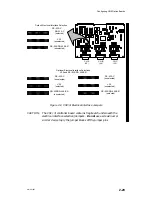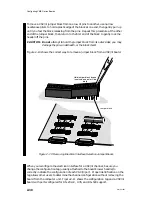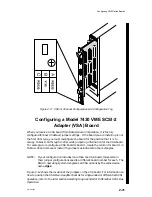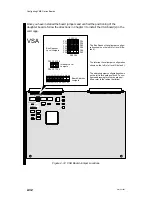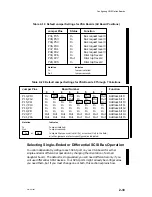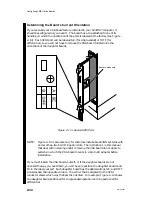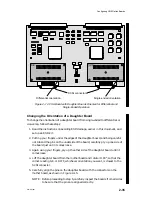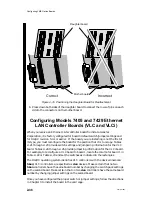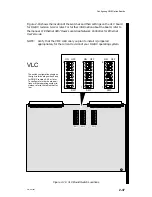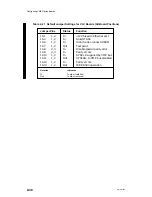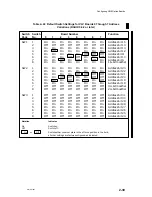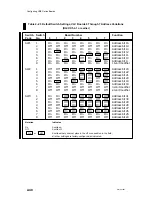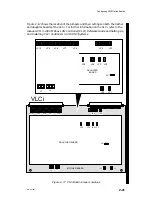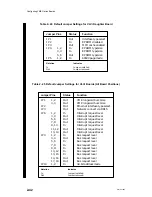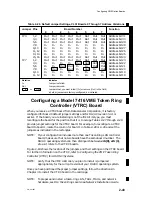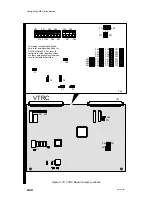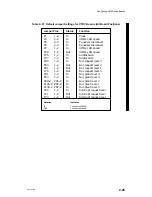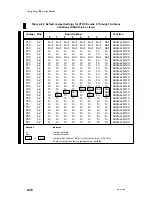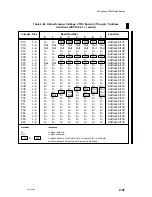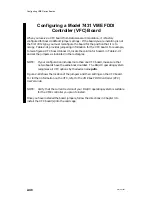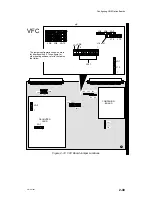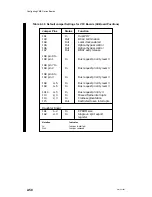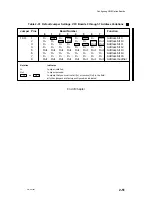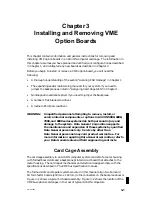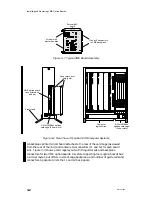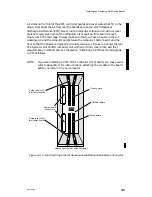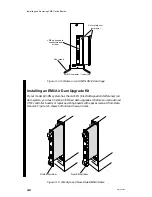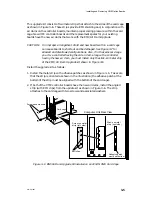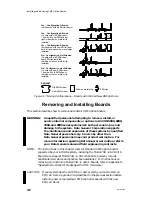
Configuring VME Option Boards
2-43
014–001867
Table 2–26 Default Jumper Settings, VLCi Boards 0 Through 7 Address Variations
Jumper Pins
Board Number
Function
0
1
2
3
4
5
6
7
JP4
1, 2
Out
Out
Out
Out
Out
Out
Out
Out
Address bit 31
3, 4
Out
Out
Out
Out
Out
Out
Out
Out
Address bit 30
5, 6
Out
Out
Out
Out
Out
Out
Out
Out
Address bit 29
7, 8
In
In
In
In
In
In
In
In
Address bit 28
9, 10
In
In
In
In
In
In
In
In
Address bit 27
11, 12
In
In
In
In
In
In
In
In
Address bit 26
13, 14
In
In
In
In
In
In
In
In
Address bit 25
15, 16
Out
Out
Out
Out
Out
Out
Out
Out
Address bit 24
JP7
1, 2
Out
Out
Out
Out
Out
Out
Out
Out
Address bit 23
3, 4
In
In
In
In
Out
Out
Out
Out
Address bit 22
5, 6
In
In
Out
Out
In
In
Out
Out
Address bit 21
7, 8
In
Out
In
Out
In
Out
In
Out
Address bit 20
9, 10
In
In
In
In
In
In
In
In
Address bit 19
11, 12
In
In
In
In
In
In
In
In
Address bit 18
Notation
Indicates
In
Jumper installed.
Out Jumper
removed.
In
or
Out
Jumpers that you must install (In) or remove (Out) in the field;
all other jumpers are factory-configured, as indicated.
Configuring a Model 7416 VME Token Ring
Controller (VTRC) Board
When you receive a VTRC board from Data General Corporation, it is factory
configured for board 0 default jumper settings and for DG/UX revision 5.4.1 or
earlier. If the board you are installing is not the first of its type, you must
reconfigure the board for the position that it is to occupy. Tables 2–27 through 2–29
provide jumper settings for the VTRC board. For example, to reconfigure a VTRC
board to board 1, locate the column for board 1 in Table 2–28 or 2–29 and set the
jumpers as indicated in the rectangles.
NOTE:
If your configuration includes more than one Token Ring LAN controller
board, make sure that no two boards have the same board number. The
DG/UX operating system can then distinguish between vitr(0), vitr(1),
etc. as it refers to the VTRC boards.
Figure 2–18 shows the location of the jumpers and their settings on the VTRC board.
For further information on the VTRC, refer to Configuring the VME Token Ring
Controller (VTRC) for AViiON
Systems.
NOTE:
Verify that the VME controller you plan to install is jumpered
appropriately for the current revision of your DG/UX operating system.
Once you have positioned the proper jumper settings, follow the directions in
Chapter 3 to install the VTRC board in the card cage.
NOTE:
To prepare and install a token-ring LAN, TAUs, MAUs, and network
hardware, see DG/Token Ring Local Area Network Installation Guide.
Summary of Contents for AViiON 5000 Series
Page 2: ......
Page 6: ......
Page 12: ...Preface x 014 001867 ...
Page 86: ...Configuring VME Option Boards 2 52 014 001867 ...
Page 144: ...Connecting External Devices to VME Option Boards 4 44 014 001867 ...
Page 150: ...VME Backplane Connector Signals and Power Distribution A 6 014 001867 ...
Page 196: ...Assigning VME Data Bus and Interrupt Priorities E 10 014 001867 ...
Page 206: ......
Page 210: ...Appendix Title ...

